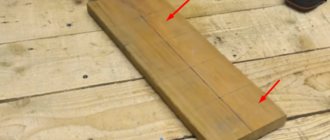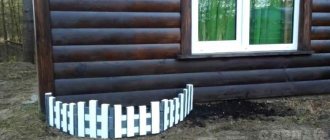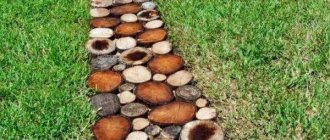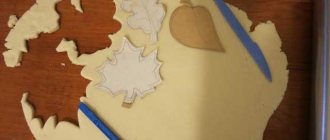Crafts from polyurethane foam can be made with your own hands in just a few hours.
If you have a disposable bottle that hasn't run out yet, why not put it to good use in your landscaping.
In this case, it is still better to resort to professional foam rather than household foam, since a small gun with a diameter of 2 mm is added to it.
Unusually simple and beautiful figures made from polyurethane foam will become the property of your site. They will not leave indifferent either neighbors or people simply passing by.
Rules for using foam
There are a number of rules for using polyurethane foam. First of all, you need to take care of the surface on which the material will be applied. If there are any oil stains, peeling plaster or paint, they should be removed.
The surface must be cleaned and wet. Then apply it in an even layer and wait until it dries completely according to the instructions. The finished material can be cut, plastered, wallpapered and puttyed.
Since the foam is not resistant to direct ultraviolet rays, the finished surface will need to be puttied, thereby closing it from direct access. There are also special tapes on sale that protect it from exposure to rays.
It is very important to observe the maximum diameter; it should be no more than three centimeters. In the case of a wide gap or hole, it is necessary to apply foam in several layers.
It is important not only to let each layer dry, but also to remember to moisten the surface on which the material is applied before use.
In addition, you should not touch the foam after application, since the impact inhibits the natural chemical hardening process. As a result, the volume, as well as the density of the substance, will be completely different.
In addition, you must shake the can thoroughly before use. It is better to place it upside down so that the substance that forms the foam comes out first, and at the very end - the compressed gas, and not vice versa.
In addition, work must begin from the bottom, slowly rising in a v-shaped motion to the top, and not vice versa.
It is very important to observe at least basic precautions when working with this substance. Because foam that has not yet hardened causes acute irritation of the skin, mucous membranes and respiratory tract. If it gets on clothing, it is removed with acetone.
Universal scheme
As you can see, there are a huge number of ideas for realizing your creative potential, and polyurethane foam helps you create beautiful sculptures. If you are not sure what you can do, then start with the simplest thing. Create any craft from an ordinary wire frame and apply a small amount of the product to it, layer by layer.
Gradually, you will see how the silhouette of the figure begins to appear, and you can easily edit it with a stationery knife, giving it the desired shape. Try to be inspired by the characters of your favorite children's cartoons: Cheburashka, Gena the crocodile, the lion cub and the turtle and many others.
Photo of polyurethane foam
Did you like the article?
0
Foam insulation - definition and characteristics?
We will try to consider in detail the features of this material and its application, so that everyone who builds their own house can master working with it. It is now not only fashionable, but also necessary to warm yourself. Energy prices are inexorably creeping up, maintaining comfort in the house is becoming an increasingly wasteful activity, so insulating apartments is more important than ever. The same wave has also swept over the construction of houses, where you can acquire a “reliable fur coat” at a very early stage; all that remains is to decide on its type. But if you have a ready-made building, even with finishing, insulation will not be a problem, especially when it was decided to use foam insulation.
The class of these substances is a polymer or a combination thereof; upon reaction between the components or a single component with moisture and air, curing occurs with pre-foaming, due to which the material successfully fills the space, sometimes increasing in volume by 20 times. The disadvantages of this group of insulation are the need for good air flow, that is, ventilation of the room for work. You also need to properly protect the insulation layer after finishing the work, because it is afraid of sunlight and precipitation; over time, the material will simply begin to deteriorate.
But these points cannot overshadow the impression of the advantages of foam materials. Biological and environmental safety allow their use in residential premises of varying degrees of cleanliness. Such insulation consists of pores filled with air or a gaseous reaction product between the components, due to this, good thermal and waterproofing is created, so additional measures to protect the room from freezing and moisture are not required. But this is provided that all external pores of the material are insulated with finishing (internal or external, depending on the location of the insulation).
Foam insulation that is well sealed from external influences will serve you for an incomparably long time, moreover, over a wide range of temperatures, even the coldest Russian winters will not destroy the material, the same applies to elemental heat.
Good insulation is also due to the fact that, when expanding, the foam does not form seams or gaps through which cold could still seep, so the “fur coat” of these materials is the most reliable. They also adhere well to any coating; adhesion guarantees reliable service for many years. This layer also has antiseptic properties and protects the metal from corrosion. Yes, also, the material, as a rule, is not flammable, you see, that’s also a plus.
Methods for insulating a main wall
Foam for walls is used to insulate structures in two variations:
- Outside.
- From the inside.
- Combined.
In the first case, the wall material is reliably protected from external atmospheric manifestations. In this case, the zone of condensation formation is shifted into the insulating mass, and not into the wall structure. Therefore, it is reliably protected from destruction under the influence of dampness - rotting and expansion of ice when freezing. In this way, a balance is maintained - heat is retained in the house and the durability of the structure is ensured.
When houses are insulated with foam from the inside, the point of condensation formation moves directly into the wall material. Despite maintaining heat in the room, the material will always be damp. Therefore, in summer it will be susceptible to rotting, and in winter it will be subject to destruction due to expansion during freezing of water.
Briefly about the main thing
Insulating a house with foam has the following number of advantages:
- No load on structures.
- Seamless and hermetic filling of cavities.
- Biological resistance.
- Fire safety.
- Harmlessness.
- Creation of anti-corrosion protection for metal elements.
- Simple application procedure.
Disadvantages - high cost, low water resistance and sun protection, the need to use a protective kit during spraying. The most common types of foam insulation are penoizol, polyurethane foam, polyurethane foam and foam concrete.
The materials can be used both in liquid form and in the form of finished panels and blocks. The main purpose is to seal cracks and cavities, fill frame walls, insulate roofs, basements, floors, and facades. Thermal insulation can be done independently according to the instructions, but it is better to entrust the procedure to professionals.
Conclusion
Foam insulation can be used for walls made of various materials, including aerated concrete, blocks and reinforced concrete panels. Therefore, they are used for insulation of private cottages and apartments. Before giving preference to any one type of foam, consult a specialist.
If you have decided to insulate your house with liquid foam, this is the right intention. Always try to buy raw materials from the best domestic and foreign manufacturers. This way you will be able to avoid premature wear of structures.
Area of use, recommendations for selection
Construction foam is a universal insulation material. However, due to some differences in the properties of various compositions, it is better to use a specific variety in one case or another. For this there are the following series of recommendations:
- Cracks, defects, and cavities during the installation of windows and doors are sealed with polyurethane. In this case, the frozen material must be protected from direct sunlight.
- Filling the large inter-wall volume of frame structures is carried out using penoizol. Used both externally and internally to form an insulating seal in walls and floors between sheathing sheets.
- Elimination of small-sized irregularities, cracks, seams, and cavities is done using polyurethane foam. For example, when installing solid insulating panels, arranging a foundation, installing windows.
Sealing defects with polyurethane foam Source yandex.net
Polyurethane liquid foam for insulating walls, attics, roofs, and basements creates reliable protection with good waterproofing performance. Spraying is carried out using special equipment. However, if the volume of similar work is small, then it is quite acceptable to use polyurethane foam from cylinders.
Do-it-yourself insulation
To make high-quality thermal insulation of a house with foam, while ensuring the safety of the wall material with a guarantee, only a real professional team can do. For those who decide to perform the procedure themselves, we can recommend the following instructions:
- The sheathing is screwed or nailed to the outer sides of the house wall. The slats, 2-3 cm thick and 7-10 cm high, are mounted edge-to-plane. Horizontal and vertical crossbars should form hollow cells with dimensions of 0.5 by 0.5 meters.
- Before starting work, the user puts on a protective suit, gloves, goggles, and a respirator.
Insulation of walls with polyurethane foam Source stroy-podskazka.ru
- The spraying equipment is brought into readiness, the container is filled (foam for wall insulation in cylinders is connected to the gun), its serviceability and performance are checked.
- The cavities of the sheathing are filled from edge to center with foam, taking into account its subsequent expansion - in full accordance with the instructions from the manufacturer.
- Upon completion of the work, the material is given time to completely harden.
- The frozen mass is leveled and finished with panels, sheet materials or plaster.
It is important to know! The choice of modification and foam manufacturer depends on the preferences, conditions of use and financial capabilities of the individual user. For example, you can simply foam the walls of your house with polyurethane foam. However, before starting work, it is recommended to find out as much information as possible about the composition used - from the seller, on the manufacturer’s website, in reviews, from craftsmen. It is better to give preference to a more reliable, safe and high-quality composition.
Quantity calculation: how many cylinders are needed?
The main parameters for calculation are the index of primary and secondary expansion, ambient temperature and humidity. When filling the seams, 1/3 of the space should remain hollow. Otherwise, the foam will extend beyond the seam.
First you need to measure the depth and width of the installation seam . Multiply the results. The resulting number is the foam consumption in grams per 1 meter of construction seam. Then you need to measure the total length of the seam and multiply by the previous result. The answer you get is the amount of sealant needed to fill the joint.
If you need to foam a triangular seam, then the last result should be divided by 2. This seam is smaller, so less sealant will also be needed.
Some nuances:
- Aerated concrete and brick can absorb foam, so excess consumption should be provided.
- When carrying out work outdoors, you need to apply a magnifying factor of 1.05-1.15.
- A decrease in air temperature by 10 degrees requires an increase in the calculated amount by 1.5 times.
- To foam hard-to-reach places, the amount of material is increased by 1.1 times.
Important ! Consumption rates are indicated on the packaging when operating under ideal conditions.
Is it possible to increase sound insulation in this way?
The foam has sound insulation properties. This is affected by:
- The thickness of the applied insulation layer reflects the incoming noise.
- Elasticity absorbs vibration from sounds.
- The tightness of seams and cracks prevents noise from penetrating into the room.
But the foam in the cylinders does not have the same characteristics as the material sprayed through the equipment.
The only type of foam in cylinders that has good performance is MAXFORTE SoundFLEX.
Today, foam is widely used to insulate walls indoors and outdoors. It is used in attics and basements, attics and loggias. Insulation of pipelines and chimneys is carried out.
The material has many positive aspects and has good sound insulation properties. When using insulation, you should familiarize yourself with the application method and also think about the cladding.











